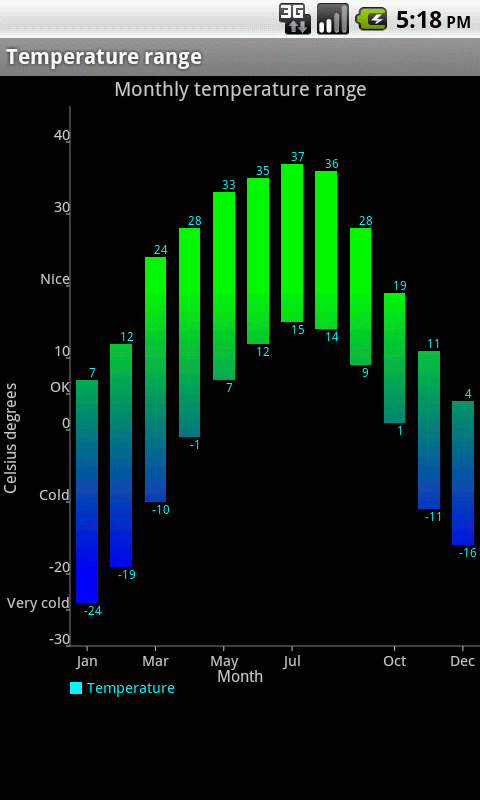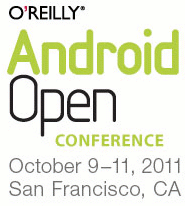ESC Boston 2011 will take place on the 26-29 September 2011, four days of hands-on training, educational sessions and an interactive exhibit hall. There are 5 programs during the event: ESC Boston – Embedded software development tutorials for Android, Linux, microprocessors, QA, C programming, etc… DesignCon East – Hardware tutorials, e.g. SDRAM debugging, hardware encryption… DesignMED – Embedded systems development for embedded medical devices. Designing with LEDs! – LED hardware and drivers. DesignDays – Embedded systems sessions mainly presented by semiconductor companies and hands-on tutorials on specific platforms such as Beagleboard or TI MSP430 Chronos Wireless Watch. There are simply too many sessions (over 170) to list them all here. So I’ll selected a few among ESC Boston and DesignDays that look particularly interesting: Android Jump Start (Monday 26 – 8:00 – 17:00) by William Gatliff (Consultant, Freelance) and Karim Yaghmour (CEO, Opersys Inc.) . The features that make Android a great cell […]
HP TouchPad Android CyanogenMod Port Gets Multitouch Support
As few days ago, I wrote that CyanogenMod team was working on Android 2.3.5 for the HP TouchPad. At the time, it could boot and display the home user interface but not much else was really working. A new video has now been released showing multitouch support has been enabled. It looks very smooth on the video and can support 10 fingers at the same time. Jean-Luc Aufranc (CNXSoft)Jean-Luc started CNX Software in 2010 as a part-time endeavor, before quitting his job as a software engineering manager, and starting to write daily news, and reviews full time later in 2011. www.cnx-software.com
HP to produce more TouchPad and Android 2.3 Port
Following the success of the HP TouchPad at 99 USD, Hewlett Packard will make a final production run for the TouchPad Tablet. HP announced the new production in “The Next Bench Blog” in a post entitled “More TouchPads on the Way” on the 30th of August 2011: Despite announcing an end to manufacturing webOS hardware, we have decided to produce one last run of TouchPads to meet unfulfilled demand. We don’t know exactly when these units will be available or how many we’ll get, and we can’t promise we’ll have enough for everyone. We do know that it will be at least a few weeks before you can purchase. I can only imagine they are planning a new production run to get rid of components inventory as if it is sold for 99 USD, and the real cost is 318 USD they would make a large loss. Android 2.3 for […]
Drawing Charts in Android with AChartEngine Library
AChartEngine is a charting library for Android applications that currently supports the following chart types: line chart area chart scatter chart time chart bar chart pie chart bubble chart doughnut chart range (high-low) bar chart dial chart / gauge combined (any combination of line, cubic line, scatter, bar, range bar, bubble) chart cubic line chart They announced that new chart types would be added in future release (Current version is 0.7.0). You can follow the updates for the library on Google Code or Facebook at http://www.facebook.com/achartengine. You can download the aChartEngine library on Google Code. You can also download some demo code such as TemperatureChart.java which display the following chart with just 100 lines of code including comments. Here’s the code (TemperatureChart.java) to display the Chart above:
|
1 2 3 4 5 6 7 8 9 10 11 12 13 14 15 16 17 18 19 20 21 22 23 24 25 26 27 28 29 30 31 32 33 34 35 36 37 38 39 40 41 42 43 44 45 46 47 48 49 50 51 52 53 54 55 56 57 58 59 60 61 62 63 64 65 66 67 68 69 70 71 72 73 74 75 76 77 78 79 80 81 82 83 84 85 86 87 88 89 90 91 92 93 94 95 96 97 98 99 100 101 102 |
** * Copyright (C) 2009, 2010 SC 4ViewSoft SRL * * Licensed under the Apache License, Version 2.0 (the "License"); * you may not use this file except in compliance with the License. * You may obtain a copy of the License at * * http://www.apache.org/licenses/LICENSE-2.0 * * Unless required by applicable law or agreed to in writing, software * distributed under the License is distributed on an "AS IS" BASIS, * WITHOUT WARRANTIES OR CONDITIONS OF ANY KIND, either express or implied. * See the License for the specific language governing permissions and * limitations under the License. */ package org.achartengine.chartdemo.demo.chart; import org.achartengine.ChartFactory; import org.achartengine.chart.BarChart.Type; import org.achartengine.model.RangeCategorySeries; import org.achartengine.model.XYMultipleSeriesDataset; import org.achartengine.renderer.SimpleSeriesRenderer; import org.achartengine.renderer.XYMultipleSeriesRenderer; import android.content.Context; import android.content.Intent; import android.graphics.Color; import android.graphics.Paint.Align; /** * Temperature demo range chart. */ public class TemperatureChart extends AbstractDemoChart { /** * Returns the chart name. * * @return the chart name */ public String getName() { return "Temperature range chart"; } /** * Returns the chart description. * * @return the chart description */ public String getDesc() { return "The monthly temperature (vertical range chart)"; } /** * Executes the chart demo. * * @param context the context * @return the built intent */ public Intent execute(Context context) { double[] minValues = new double[] { -24, -19, -10, -1, 7, 12, 15, 14, 9, 1, -11, -16 }; double[] maxValues = new double[] { 7, 12, 24, 28, 33, 35, 37, 36, 28, 19, 11, 4 }; XYMultipleSeriesDataset dataset = new XYMultipleSeriesDataset(); RangeCategorySeries series = new RangeCategorySeries("Temperature"); int length = minValues.length; for (int k = 0; k < length; k++) { series.add(minValues[k], maxValues[k]); } dataset.addSeries(series.toXYSeries()); int[] colors = new int[] { Color.CYAN }; XYMultipleSeriesRenderer renderer = buildBarRenderer(colors); setChartSettings(renderer, "Monthly temperature range", "Month", "Celsius degrees", 0.5, 12.5, -30, 45, Color.GRAY, Color.LTGRAY); renderer.setBarSpacing(0.5); renderer.setXLabels(0); renderer.setYLabels(10); renderer.addXTextLabel(1, "Jan"); renderer.addXTextLabel(3, "Mar"); renderer.addXTextLabel(5, "May"); renderer.addXTextLabel(7, "Jul"); renderer.addXTextLabel(10, "Oct"); renderer.addXTextLabel(12, "Dec"); renderer.addYTextLabel(-25, "Very cold"); renderer.addYTextLabel(-15, "Cold"); renderer.addYTextLabel(-5, "Quite cold"); renderer.addYTextLabel(5, "OK"); renderer.addYTextLabel(15, "Decent"); renderer.addYTextLabel(25, "Warm"); renderer.setMargins(new int[] {30, 70, 10, 0}); renderer.setYLabelsAlign(Align.RIGHT); SimpleSeriesRenderer r = renderer.getSeriesRendererAt(0); r.setDisplayChartValues(true); r.setChartValuesTextSize(12); r.setChartValuesSpacing(3); r.setGradientEnabled(true); r.setGradientStart(-20, Color.BLUE); r.setGradientStop(20, Color.GREEN); return ChartFactory.getRangeBarChartIntent(context, dataset, renderer, Type.DEFAULT, "Temperature range"); } } |
Jean-Luc Aufranc (CNXSoft)Jean-Luc started CNX Software in 2010 as a part-time endeavor, before quitting his job as a software engineering manager, and […]
Toshiba AT200: OMAP4430 Honeycomb Tablet.
Toshiba also announced the Toshiba AT200, a 10″ Android 3.2 Tablet powered by a Texas Instruments OMAP4430 @ 1.2 GHz at IFA 2011. At 7.7mm thick, it is said to be the thinnest tablet in the world. It feature an IPS (In-plane switching) screen for better viewing angle and color reproduction and 7 to 11 hours battery life is expected for normal usage. Here are Toshiba AT200 specifications: Processor: Texas Instruments OMAP4430 @ 1.2GHz. Memory: 1GB of RAM and up to 64GB of flash storage. Display: 10.1-inch capacitive touchscreen with 1280 x 800 pixel resolution. Cameras: 5 MP (rear) and 2 MP (front). Expansion: microSD slot. Networking: WiFi (802.11b/g/n) Bluetooth Other I/O: micro-USB micro-HDMI docking connector Battery: 7 to 11 hours of operation. Dimensions : 256 x 176 x 7.7 mm Weight: 558g They only have prototypes of the device for now, and will only sell it in Q4 2011 […]
Android NDK revision 6b
Google has just released Android Native Development Kit Revision 6b, the Android SDK that allows developers to reuse C/C++ code. It is a bug fix version without new feature compared to Revision 6. Here’s the Changelog of the most important bug fixes: Fixed the build when APP_ABI=”armeabi x86″ is used for multi-architecture builds. Fixed the location of prebuilt STLport binaries in the NDK release package. A bug in the packaging script placed them in the wrong location. Fixed atexit() usage in shared libraries with the x86standalone toolchain. Fixed make-standalone-toolchain.sh –arch=x86. It used to fail to copy the proper GNU libstdc++ binaries to the right location. Fixed the standalone toolchain linker warnings about missing the definition and size for the __dso_handle symbol (ARM only). Fixed the inclusion order of $(SYSROOT)/usr/include for x86 builds. See the bug for more information. Fixed the definitions of ptrdiff_t and size_t in x86-specific systems when they […]
Android Open Conference 2011 Schedule
O’reilly’s Android Open Conference 2011 will take place on 9-11 October 2011 in San Francisco. This is the first time this conference takes place. According to the organizers this conference will “cover the entire Android ecosystem. Whether you’re a developer, IT pro, business decision-maker, or marketer, you’ll find the latest and best information for maximizing the power of the Android platform”. There will be keynotes, practical workshops, and expert-led sessions dealing with: Building Android apps: best practices Android internals—under the hood Development tools New frameworks Alternative languages Gaming and game development Enterprise solutions and considerations Performance and security Analytics and revenue models Multiple Android markets Promotion and consumer needs and much more Please find below the schedule for the workshops (Sunday 9th October 2011) and conferences (10-11 October 2011) related to application development and platform development during the 3-day conference. Schedule on the 9th of October 2011 for Application Development […]
Linaro 11.08 Release with Linux Kernel 3.0.3
Linaro has just released version 11.08 based on Linux Kernel 3.0.3 with support or TI Beagleboard, BeagleBoard-xM & Pandaboard, ST Ericsson Snowball, Freescale i.MX53 development board and Samsung Origen board. Here are the highlights of the release: Android The Linaro 11.08 toolchain release of GCC 4.6 has compiled the Origen, BeagleBoard, BeagleBoard-xM, PandaBoard and Snowball builds, and are running Android 2.3.5 with a 3.0 Linux kernel. Together with the mainline kernel focused builds for BeagleBoard and PandaBoard and a preliminary i.MX53 build, the Android Platform Team ships 6 builds this month. A first! Android Platform code aliasing violations have been fixed allowing the use of strict-aliasing for better optimizations with gcc 4.6 based toolchains. The Android toolchain 11.08 has been released and has received numerous updates, including updated binutils and current gmp/mpfr/mpc. Benchmarks are available here. libjpeg-turbo 1.1.1 and ffmpeg with support for H.264 and WebM build are available on […]






